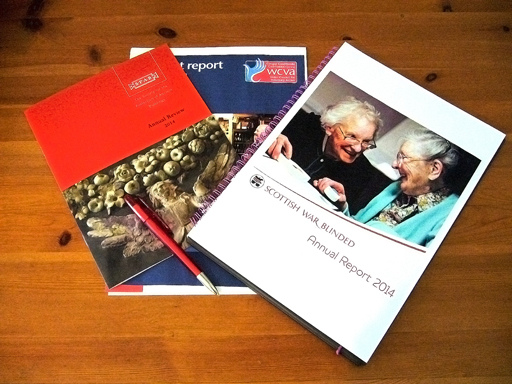2 Looking at funding through annual reports

One key method of finding out about funding is to look at an organisation’s annual report, which (if it is a charity) by law it has to lodge every year with the appropriate charity regulator for the part of the UK in which the organisation operates. Annual reports generally highlight the organisation’s main activities, achievements and challenges for the year, as well as information on funding received from grants, contracts, donations and income from investment and trading activities. Annual reports are useful ways to inform stakeholders about the organisation’s work. The following two activities are based on using annual reports to focus on sources of funding.
Activity 2 How many funders?
In this activity you will look briefly at one organisation to get a sense of the myriad funding possibilities and relationships. The organisation is Belfast and Lisburn Women’s Aid [Tip: hold Ctrl and click a link to open it in a new tab. (Hide tip)] (2016), which provides support, help and emergency accommodation for women and children affected by domestic violence.
The following extract from their annual report lists the organisation’s funders for 2013.
THANK YOU TO ALL OUR FUNDERS
Thank you to our partner agencies listed below and to all the dedicated individuals, organisations and companies who supported our work against Domestic Violence so generously during the year.
- Belfast City Council Community Safety
- Belfast Health & Social Care Trust
- Big Lottery Fund – Improving Futures
- Big Lottery Fund – Reaching out – Connecting with Older People
- Children in Need
- Comic Relief
- Department of Education – Early Years Fund
- Department of Justice
- DHSS&PS
- Down Safer Communities Partnership
- East Belfast Policing and Community Safety Partnership
- Health & Social Care Board
- Lisburn Policing and Community Safety Partnership
- Northern Ireland Housing Executive
- Northern Ireland Housing Executive – Supporting People
- Nutricia Ltd
- Police Service Northern Ireland
- Probation Board Northern Ireland
- Public Health Agency
- South Belfast Policing and Community Safety Partnership
- South Eastern Health & Social Care Trust
- Tesco
- Read through the list and for each funder note whether they are public, private or voluntary sector.
- Which funder is most prominent? If you do not recognise the names of the organisations, you could quickly search for them online.
- What might be missing from this list of funders?
Comment
| Public sector | Private sector | Voluntary sector |
|---|---|---|
| Various community safety partnerships | Nutricia Ltd | Big Lottery Fund |
| Health & Social Care Trust | Tesco | Children in Need |
| Department of Education | Comic Relief | |
| Department of Justice | ||
| DHSS&PS | ||
| Health and Social Care Board | ||
| Northern Ireland Housing Executive | ||
| Police Service | ||
| Probation Board | ||
| Public Health Agency |
Were you surprised by how many funders there were? This is partly due to the nature of this organisation: it spans policing, community safety, housing, education and health issues, therefore one source of funding would not cover everything the organisation seeks to achieve. Many organisations, such as women’s aid groups and others in health and social care, often work in
What is missing from this list are the names of individuals who might have donated money. Much fundraising results in small amounts, which together can add up to a significant sum and contribute to the running of organisations. Much of this would also be anonymous giving.
You might also want to think about the challenges of managing these relationships and what different funders might give money for – is it for one-off or long-term activities? These are important issues to be discussed further this week.
